Вы здесь
Balkhany Mountains.
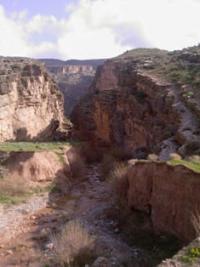
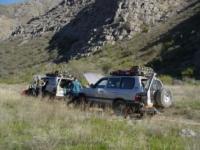
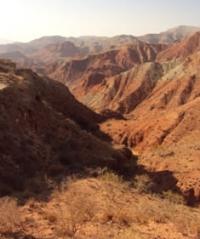
Landmarks of Turkmenistan.
“The miracles of earth are the laws of heaven”
Jean Paul Richter.
Seven Wonders of Turkmenistan.
The Balkhany Mountains located between the Krasnovodsk peninsula and the Kopetdag Bolshoy and Maly Balkhans, according to M. V. Muratov, I. A. Rezanova, and others, are tectonically related to the Alpine geosynclinal region (the region of the Cenozoic Tethys folding) and on the basis of geological data should be combined with Kopetdag.
The Bolshoi Balkhan, reaching 1880 meters of absolute height (Mount Arlan), is an asymmetric anticlinal structure (anticlinorium) with a steep and even upturned northern part and a more gentle south. In its core, the lower and middle Jurassic rocks were raised and brought to the surface, while parts are formed by steeply falling layers of chalk and partly (in the north) of the Paleogene.
The strata of the Jurassic and Cretaceous are mainly represented by limestone and sandstone. The structure of the Big Balkhan continues to the west, to the southern part of the Krasnovodsk peninsula (Kyryanynkyure precipice, Kubadag mountains, Shakhadam, etc.), but in a significant southwestern part it is submerged and hidden by the newest sediments (within the Dardzha Peninsula and Balkhan’s saline march) and the waters of the Krasnovodsk Bay.
According to M. V. Muratov, the anticlinorium of Balkhan is similar in age to the anticlinoria of the Greater Caucasus and the Mountain Crimea, that is, the development of geosyncline and the formation of folded structures here began in the Mesozoic and ended in Cenozoic.
Stretching in the latitudinal direction, the rise of the Bolshoi Balkhan rises abruptly over the surrounding plains and has steep bare slopes. The asymmetry of the tectonic structure is reflected in the structure of the relief.
The watershed extends near the northern edge of the flat top surface; the steep northern slope is an almost sheer wall. The more gentle southern slope is cut by narrow and deep ravines, on which, after heavy rainfall and spring thawing of snow, temporary streams, often having the character of mudflows, flow rapidly.
They carry a mass of detrital material onto the plain at the southern foot of the mountains and form flat carry-over cones here. There are no rivers with a permanent drain on the Bolshoi Balkhan. In the lower altitude zone of the Big Balkhan, approximately up to a height of 800 m, solyak wormwood (with southern wormwood - Artemisia herba-alba) is distributed, desert vegetation on gray brown saline march gravelly soils.
There are single black saxaul trees and xerophytic shrubs. On the less gravelly soils of the gray earth type (light gray earth) ephemera develop in spring. Above 800 meters of the desert are replaced by semi-deserts - with steppe deserts and desert steppes (with the domination of desert wheat grass - Agropyron desertorum).
Mountain feathery fescue steppes (from Festuca sulcata, Stipa lessingiana, S. capillata) are even higher. Among the mountain steppes on the gravelly and rocky slopes there are widespread juniper forests (from Juniperus turcomanica) and upland xerophytes - astragalus, spiny sainfoin, and down the slopes - (Gypsophila aretioides).
Shrubs grow along the shady slopes of the gorges. The soil on the slopes of the mountains is mainly gray type lands (ordinary, partly dark gray lands). The gravelly soil under juniper woodlands, some researchers refer to the mountain brown.
Small areas with a flattened relief in the belt of distribution of ordinary and dark gray lands are used for rainfed beds. The strong desert of the mountain landscapes of the Big Balkhan in the nature of its fauna is in poverty compared to the Kopetdag complex of mountain animals and in the penetration of desert desert animals here.
The Small Balkhan, separated from the Bolshoi Balkhan by a synclinal trough, in which the lower reaches of the dry riverbed Uzboy is located, is also an anticlinal uplift. In terms of geological features, it should be directly included in the Kopetdag system as its extreme northwestern link.
Small Balkhan reaches 777 meters above sea level and is composed of Cretaceous and partly Paleogene rocks - limestone and marl. Formed by marls and gypsum clays, the strongly dissected foothills have typically expressed forms of the so-called clay karst (described in detail by A. D. Natsky), apparently due to their occurrence of karst suffosion processes and underground erosion.
The mountain slopes of the Small Balkhan are occupied mainly by wormwood and solyankova desert of the southern type (dominated by southern wormwood).
Geographical coordinates of Bolshoi Balkhan Ridge: N39°36'44.50" E54°33'03.91"
Geographical coordinates of Small Balkhan ridge: N39°18'16.07" E54°55'40.04"
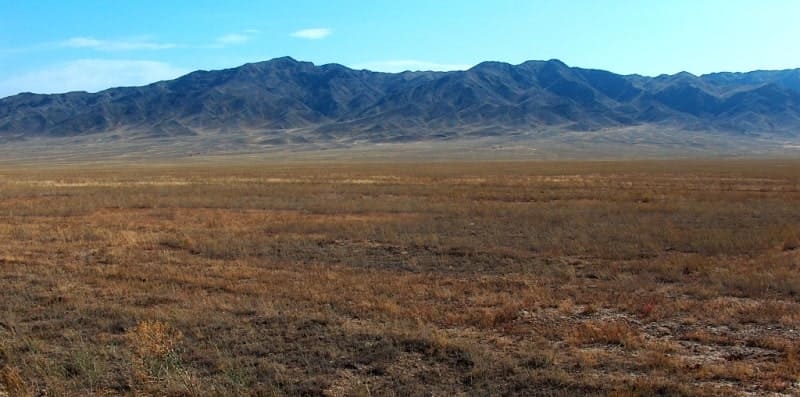

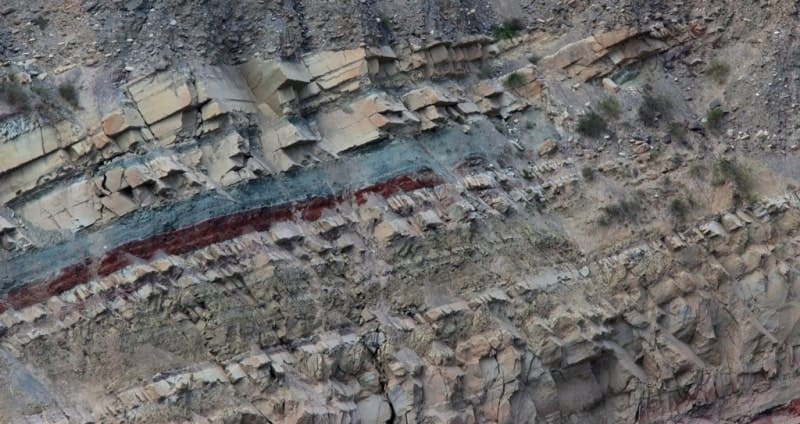



Authority:
N. A. Gvozdetsky, N. I. Mikhaylov. "Physical geography of the USSR. Asian part. The edition third corrected and added. Moscow "Thought" of 1978. http://tapemark.narod.ru/geograf/1_5_5.html
Alexander Petrov.
Photos by
Alexander Petrov.







